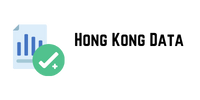The conclusion of a speech should be short – it can take the form of: a summary of the most important issues, a presentation of the final conclusions or a punch line. Another good trick is to place a question at the beginning, the answer to which will be found in the conclusion. Such a framework structure will certainly be attractive to the listener, who will finally learn the solution to a given puzzle, but also to the speaker, who will keep the reader’s attention until the very end. At the end, it is only appropriate to thank for their attention.
How to write a speech – template
To simplify matters a bit and at the same dataset time condense the above information, we have prepared a summary of the statement:
- Entry:
- greeting – a courtesy address to the listeners;
- a short and concise thank you for the invitation / the opportunity to speak;
- self-presentation;
- presentation of the topic of the speech (e.g. in the form of an anecdote, joke, questions).
-
Expansion:
- presenting arguments or readers search engines need to understand that you are addressing issues from most important to least important;
- maintaining contact with the listeners (addresses to the addressees, questions to the audience).
- End:
- a short summary of the entire argument, presentation of conclusions, a welcome punch line;
- thanks for your attention.
How to write a speech – presentation
A common practice is a speech during marketing list which the speaker uses a slide show. This is a great convenience for listeners, who can better understand a given issue using charts, tables or graphics. When asked how to write a speech – presentation, the answer is simple – just like any other. It is worth having it in the form of an outline of the speech, where after the obligatory introduction there is an appropriate development for the short ideas and slogans presented on the screen and a summary of the most important information at the end .
Follow our tips and learn how to write speeches that will help you speak to be heard.
